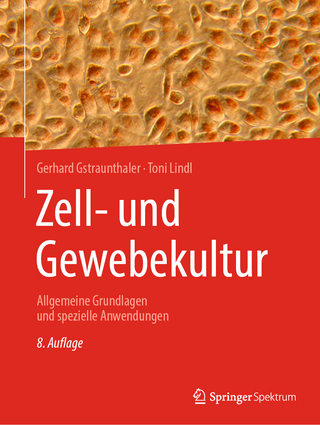
Invertebrate Tissue Culture Methods
Springer Verlag, Japan
978-4-431-70313-6 (ISBN)
I started insect cell culture work in 1962, when T. D. C. Grace reported the first establishment of invertebrate continuous cell lines. He obtained grow ing cells from pupal ovaries of the emperor gum moth, Antheraea euca lypti. At that time, I was trying to obtain growing cells from leafhoppers. Grace's method could not be applied directly to my culture because of the differences in species, the size of the insects, and the tissue to be cul tured. The vertebrate tissue culture methods gave me some ideas for pre paring cultures from leafhoppers, but those could not be used directly either. There were no textbooks and no manuals for invertebrate tissue culture, so I had to develop a method by myself. First, I considered what type and what size of vessels are suitable for insect tissue culture. Also, I had to look for suitable materials to construct the culture vessels. Sec ond, I had to examine various culture media, especially growth-promot ing substances, such as sera. Then I had to improve culture media by trial and error. The procedure to set up a primary culture was also a problem. How could I sterilize materials? How could I remove tissues from a tiny insect? How many tissues should I pool in order to set up one culture? I had to find out the answers. Naturally, it took a lot of time.
1 General Methods.- 1 Facilities and Equipment.- 2 Basic Information and Overview.- 3 Preparation of Media.- 4 General Cell Culture Methods.- 2 Methods for Setting Up Primary Cultures Specific to Animal Groups.- 5 Insecta (Lepidoptera).- 6 Insecta (Diptera).- 7 Insecta (Coleoptera).- 8 Insecta (Hemiptera).- 9 Insecta (Hymenoptera).- 10 Insecta (Blattaria).- 11 Insecta (Orthoptera).- 12 Arthropods Other Than Insects.- 13 Prochordata.- 14 Echinodermata.- 15 Mollusca.- 16 Annelida.- 17 Nematoda.- 18 Platyhelminthes.- 19 Coelenterata.- 20 Porifera.- 3 Organ Culture.- 21 Insecta.- 22 Arthropoda Other Than Insecta.- 23 Prochordata.- 24 Echinodermata.- 25 Mollusca.- 26 Annelida.- 27 Nematoda.- 28 Platyhelminthes.- 29 Coelenterata.- 30 Porifera.- 4 Related Techniques.- 31 Cell Cloning.- 32 Karyotype Analysis.- 33 Identification of Cell Lines.- 34 Viability of Cells.- 35 Viable Cell Enumeration.- 36 Growth Rate.- 37 Microscope Photography.- 38 Virus Inoculation-Plaque Assay.- 39 Examination of Drug Effects.- 40 Cell Fusion.- 41 Gene Technology.- 42 Large-Scale Cell Culture.- 1 Composition of Salt Solutions and Culture Media.- 2 List of Reported Continuous Invertebrate Cell Lines.- 3 Commercially Available Culture Medium Products and List of Suppliers.
| Reihe/Serie | Springer Lab Manuals |
|---|---|
| Zusatzinfo | 121 Illustrations, black and white; XVI, 446 p. 121 illus. |
| Verlagsort | Tokyo |
| Sprache | englisch |
| Maße | 155 x 235 mm |
| Themenwelt | Naturwissenschaften ► Biologie ► Mikrobiologie / Immunologie |
| Naturwissenschaften ► Biologie ► Zellbiologie | |
| Naturwissenschaften ► Biologie ► Zoologie | |
| ISBN-10 | 4-431-70313-6 / 4431703136 |
| ISBN-13 | 978-4-431-70313-6 / 9784431703136 |
| Zustand | Neuware |
| Haben Sie eine Frage zum Produkt? |
aus dem Bereich


